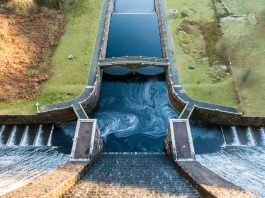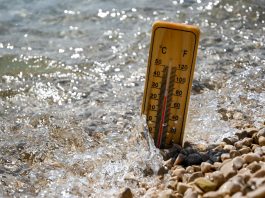A new report has revealed the significant economic and environmental benefits of seabed mapping within the UK Exclusive Economic Zone (EEZ).
The report, developed by Eunomia Research & Consulting (Eunomia), defines the cost-benefit relationship of seabed mapping to the UK economy.
It also highlights the potential benefits of mapping seabeds in environmental conservation, compliance with legislation, and in varying maritime sectors like shipping, offshore energy, and coastal leisure.
Seabed mapping brings huge economic value
The report estimates that the average total benefits of seabed mapping in the UK EEZ is around £8.9bn, compared to an estimated annual investment of £103m each year.
This represents a remarkable average estimate of cost-benefit ratio of £86 benefit for every £1 spent.
Most of the value derived from seabed mapping efforts is from market sectors such as offshore energy and shipping, trades, and ports, with the remainder stemming from non-market sectors, such as environmental protection and legislative compliance.
Why is seabed mapping so important?
Seabed mapping has the potential to drive growth and innovation across a range of maritime sectors by improving navigational safety, supporting job creation and facilitating economic development.
This data is critical to a range of maritime sectors and their associated value. For example, accurate seabed mapping is essential for developing navigational charts to enable the safe passage of vessels and support maritime trade.
Elsewhere, this data is critical for sectors like offshore energy, fishing and aquaculture, defence, and telecommunications, as it identifies and surveys suitable sites for development.
Beyond market applications, seabed mapping also contributes to environmental protection and marine resource management. This data helps establish conservation areas to protect marine habitats while also monitoring levels of erosion and seabed landslides.
Together, they play a vital role in helping the UK government to comply with various regulations and legislations.
Thanks to collective initiatives such as the UK Centre for Seabed Mapping (UK CSM), the UK has a coordinated approach to the collection and management of bathymetric and marine data.
However, advancements in mapping technologies in recent decades have allowed for a more comprehensive and up-to-date understanding of the seafloor.
Foundation data for maritime decisions
With the maritime industry making up a vital part of the UK’s national infrastructure, the UKHO commissioned this project with the goal of improving the quality, access and coverage of seabed mapping data across the UK EEZ.
This aligns with the UKHO’s goal to support maritime decision-making and the safe passage of vessels at sea.
David Parker, Head of Hydrographic Programmes, commented: “Mapping the seabed isn’t just about uncovering what lies beneath our ocean’s surface – it is a foundation data set for supporting economic growth, protecting our vital ecosystems, and steering the maritime industry towards a safer, more sustainable future.
“We hope the findings of this report demonstrate the tangible value in having comprehensive, accurate mapping of the seabed for the many organisations in the UK that collect this data and rely upon it for responsible decision making.”









